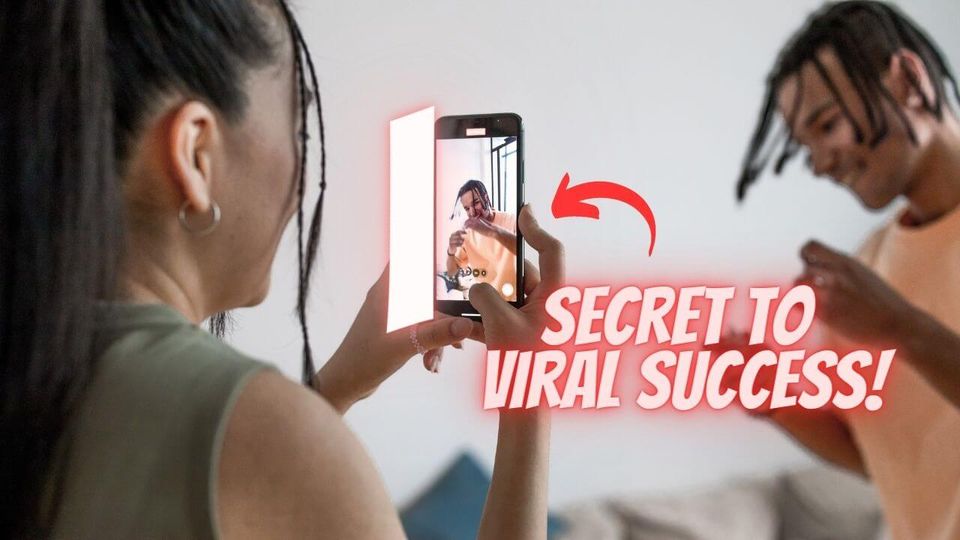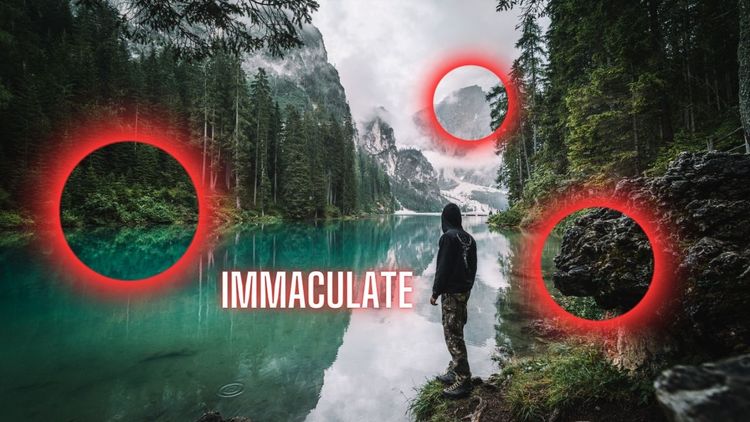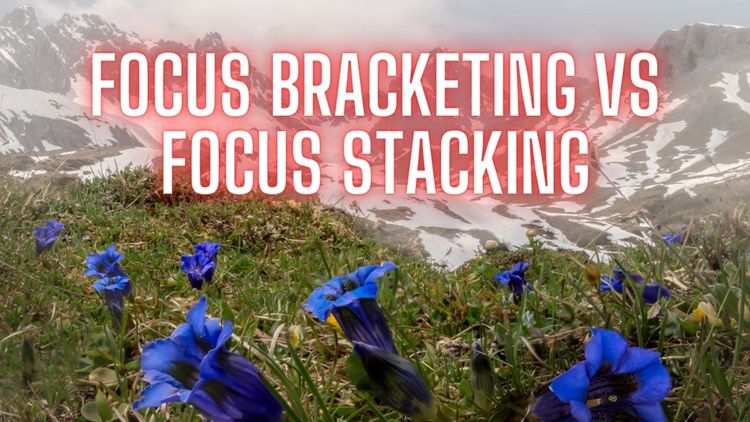What Is Vertical Video Content? A Secret Weapon to Viral Success!

You, my dear reader, are about to embark on a journey into the world of vertical video content.
This may sound like a strange and foreign land, but fear not, for I shall be your guide.
So, sit back, relax, and let your mind wander as we explore the wondrous world of vertical video.
Picture this: you're scrolling through your favorite social media platform, and suddenly, a video catches your eye.
But wait, something's different. This video is not in the usual horizontal format. No, it's vertical.
You may have thought to yourself,
'What is this sorcery? Why is this video not conforming to the standard aspect ratio?'
Well, my friend, that video is what we call vertical video content. And it's here to stay.
So, buckle up, and let's dive into the world of vertical video together.
What is vertical video?
Are you tired of watching videos that don't fit your phone screen?
Well, get ready to discover a whole new way of viewing with this latest trend in video formatting!
Vertical video content is the new kid on the block, and it's taking over social channels by storm.
Videos that are taller than they are wide and intended for viewing in portrait mode are what make up vertical video content.
This type of video is the opposite of traditional horizontal videos, which are made for viewing in landscape mode.
Vertical videos have a 9:16 ratio, while horizontal videos have a 16:9 ratio. While vertical video has historically been shunned by professional video creators, it has become popular because it's ideal for mobile viewing.
When in a 9:16 ratio, it fills the entire screen, making it perfect for social media and brands use vertical video ads in their content marketing strategy.
Social media platforms have accepted and rolled out vertical videos across the board, to the point that horizontal video on mobile now often seems strange and jarring.
Not only that, but vertical videos are also notoriously immersive and are the more convenient format for mobile users.
So, if you're looking to create content like social media videos, make sure to consider the vertical orientation.

What is vertical video aspect ratio?
So you're learning about the aspect ratio for videos shot in portrait mode, and let me tell you, it's all about making sure your visuals don't get squished or cut off.
Vertical video content is becoming increasingly popular, and you don't want to be left behind.
The aspect ratio for vertical videos is 9:16, which means that the height of your video should be 9 parts, while the width should be 16 parts.
But wait, there's more! Certain platforms like Facebook stories have their own preferred aspect ratios, like 4:5.
This means that you need to make sure you're using the correct aspect ratio for the platform you're posting on.
Using the wrong aspect ratio can result in distortion or clipping, which can be a real bummer for your viewers.
So, when it comes to creating vertical video content, don't forget about the aspect ratio for vertical.
It might seem like a small detail, but it can make a big difference in how your video is perceived.
Keep in mind the 9:16 aspect ratio as the universal standard, but also be aware of any platform-specific aspect ratios.
Your viewers'll appreciate the effort you put into making sure your video looks its best.
What is portrait video mode?
Capturing sharp faces and blurred backgrounds, portrait video mode on smartphones is a game-changer for those who love taking pictures and videos.
It's like having a mini photo studio in your pocket!
Here are three reasons why you should consider using portrait video mode for your content strategy:
Vertical video is the future - With the rise of social media, vertical video is becoming more and more popular.
People are watching videos on their phones more than ever, and portrait video mode allows you to create content that fits perfectly on their screens.
So, if you want to stay ahead in the game, start using portrait video mode now!
It's all about the bokeh - The bokeh effect is what makes portrait mode so special. It creates a beautiful blurred background that makes your subject stand out.
This effect is usually only achieved with professional cameras, but with portrait video mode, you can achieve it with just your smartphone.
So, if you want to take your content to the next level, use portrait video mode to create stunning videos with that bokeh effect.
It's perfect for close-ups - Portrait video mode is specifically designed for close-up shots of one person.
It captures the details of their face and blurs out the background, making them the center of attention.
So, if you want to show off your makeup skills or capture a heartfelt moment with a loved one, portrait video mode is the way to go.
Incorporating portrait video mode into your content strategy can help your videos stand out on social media and connect with your audience on a deeper level.
So, next time you're recording a video on your smartphone, try using portrait video mode and see the difference it makes.

Why do you want to create short form vertical videos?
Creating short form videos in portrait mode can greatly increase viewer engagement on mobile devices, with over half of all worldwide video plays coming from mobile users.
By creating content that's specifically tailored to the vertical video format, you can tap into this huge audience and drive more traffic to your social media pages.
Short form vertical videos are perfect for capturing attention and keeping viewers engaged, as they're more likely to be viewed in full screen on mobile devices.
This makes your brand stand out from the crowd.
The benefits of creating short form vertical videos go beyond just increased engagement and brand awareness.
By using this format, you can also position your brand as innovative and cutting-edge, which can help to attract a younger, more tech-savvy audience.
This is especially important in today's digital landscape, where social media platforms are becoming increasingly crowded and competitive.
Short form vertical social videos are a great way to differentiate your brand and make it stand out in the crowded social media space.
In summary, if you want to increase viewer engagement and stand out on social media, creating short form vertical videos is a smart strategy.
By tailoring your content to the vertical video format, you can capture viewers' attention and keep them engaged for longer periods of time.
So why not try your hand at creating some short form vertical videos production instead of landscape videos today and see how they can help to boost your brand's visibility and engagement on social media?

What are some best practices for creating engaging vertical video content
Maximizing viewer engagement is crucial for creating captivating stories that leave a lasting impression on your audience.
When it comes to creating vertical video content, there are certain best practices that can help you achieve this goal.
First and foremost, frame your subject and use close-ups and tight shots to draw the viewer's attention.
By filling the vertical space, you can create a more immersive experience for your audience.
Another important aspect of creating engaging vertical video content is optimizing your video for mobile viewing.
As mobile devices are the primary way people consume video content, it's important to ensure your video is easily viewable on a smartphone or tablet.
This means maintaining a steady shot and avoiding excessive camera movements that can be disorienting for the viewer.
You should also consider splitting the screen if necessary to make the most of the vertical space.
Effective storytelling is also crucial in creating engaging vertical video content. This means well-scripted and rehearsed videos with a clear message.
By focusing on the human story and capturing the essence of the subject, you can create a more emotional connection with your audience.
Don't be afraid to experiment with different techniques and styles to find what works best for your content.
By following these best practices, you can create vertical video content that engages and captivates your audience.
how to optimize vertical video content for different social media platforms
Step up your social media game by making your stories stand tall and fill the screen with eye-catching visuals tailored to each platform's unique requirements.
When it comes to optimizing vertical video content for different social media channels, it's important to understand the video dimensions that work best for each platform.
For example, Instagram Reels and TikTok both have a 9:16 aspect ratio, whereas Snapchat's ideal ratio is 9:19.2.
Once you know the ideal dimensions for each platform, it's important to optimize your video for viewing without sound. Many social media users watch videos on mute, so make sure your visuals are eye-catching and your captions are engaging.
To grab viewers' attention immediately, start your video with an attention-grabbing opening.
Use bold text and bright colors to make your video stand out in a sea of content.
Finally, pay attention to framing and composition. Make sure your subject is centered and fills the screen, and avoid placing important elements at the edges of the frame.
Tailor your video to the specific platform you're posting on, as each platform has different requirements and best practices for vertical video content.
With these tips in mind, your vertical video content will be sure to stand out on social media channels and command attention.

Mobile Video Format In Portrait Mode FAQs
What is vertical video?
Vertical video is a video format that is taller than it is wide. It is shot in portrait orientation and is ideal for viewing on mobile devices.
Why should I use vertical video for social media marketing?
Vertical videos take up more screen space on mobile devices, making them more visually engaging and effective for capturing attention. In fact, some social platforms are optimized for vertical video, such as TikTok and Instagram Stories, and can even perform better than horizontal videos in terms of views and engagement.
How do I shoot vertical videos?
To shoot a vertical video, simply hold your phone vertically while recording. Make sure to keep the subject in the center of the frame and avoid panning or tilting the camera too much.
Can I convert a horizontal video to vertical?
Yes, you can convert a horizontal video to vertical using editing software or apps. However, this may result in cropping some of the image and reducing the quality of the video.
What are the best practices for using vertical video on social media?
Some best practices for using vertical video on social media include keeping the video short and visually engaging, using captions to convey your message, and optimizing the video for each social platform's specifications.
What is vertical video syndrome?
Vertical video syndrome is a term used to describe the negative perception of vertical videos due to how they appear on traditional screens, such as TVs and computers.
However, with the rise of mobile devices and social media, vertical videos are becoming more accepted and even preferred.
How do I make sure my vertical video is the appropriate size?
Different social platforms have different specifications for video dimensions. To ensure your vertical video is the appropriate size, check the platform's guidelines or use a video editing tool that allows you to customize the dimensions.
What are some tips for using vertical video in my video marketing strategy?
Some tips for using vertical video in your video marketing strategy include focusing on visually engaging content, incorporating text or captions for context, and testing different formats and lengths to see what resonates with your audience.
How important is live video in a vertical format?
Live video in a vertical format can be a great way to engage your audience in real-time, especially on social media. Just make sure to test your setup beforehand and have a clear plan for what you want to communicate.
How do I ensure my vertical video is optimized for mobile viewing?
Some ways to optimize your vertical video for mobile viewing include using high-resolution images, keeping the video short and visually engaging, and using captions or subtitles to convey your message.
Conclusion - What Is Vertical Video on Social Media
Congratulations, you now know everything you need to know about vertical video content!
You understand that it's video content where the aspect ratio is taller than it is wider, and that it's optimized for viewing on mobile devices held in a portrait orientation.
You also know that creating short-form vertical videos is a great way to engage your audience on social media platforms.
But why stop there?
Imagine yourself as a butterfly, flitting from flower to flower, spreading your message with each flutter of your wings.
Your vertical video content is your nectar, drawing people in with its rich colors and sweet fragrance.
And just like a butterfly, your content can be transformative, inspiring your audience to see the world in a different way.
So go forth, create, and spread your wings!
Your friend,
Ben
Discover the best gimbals for vertical video:







